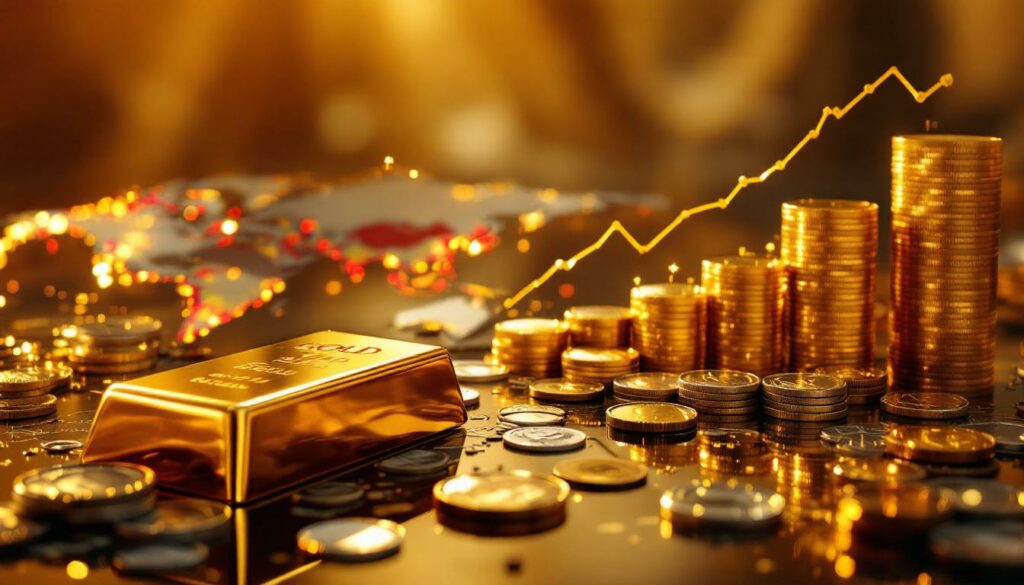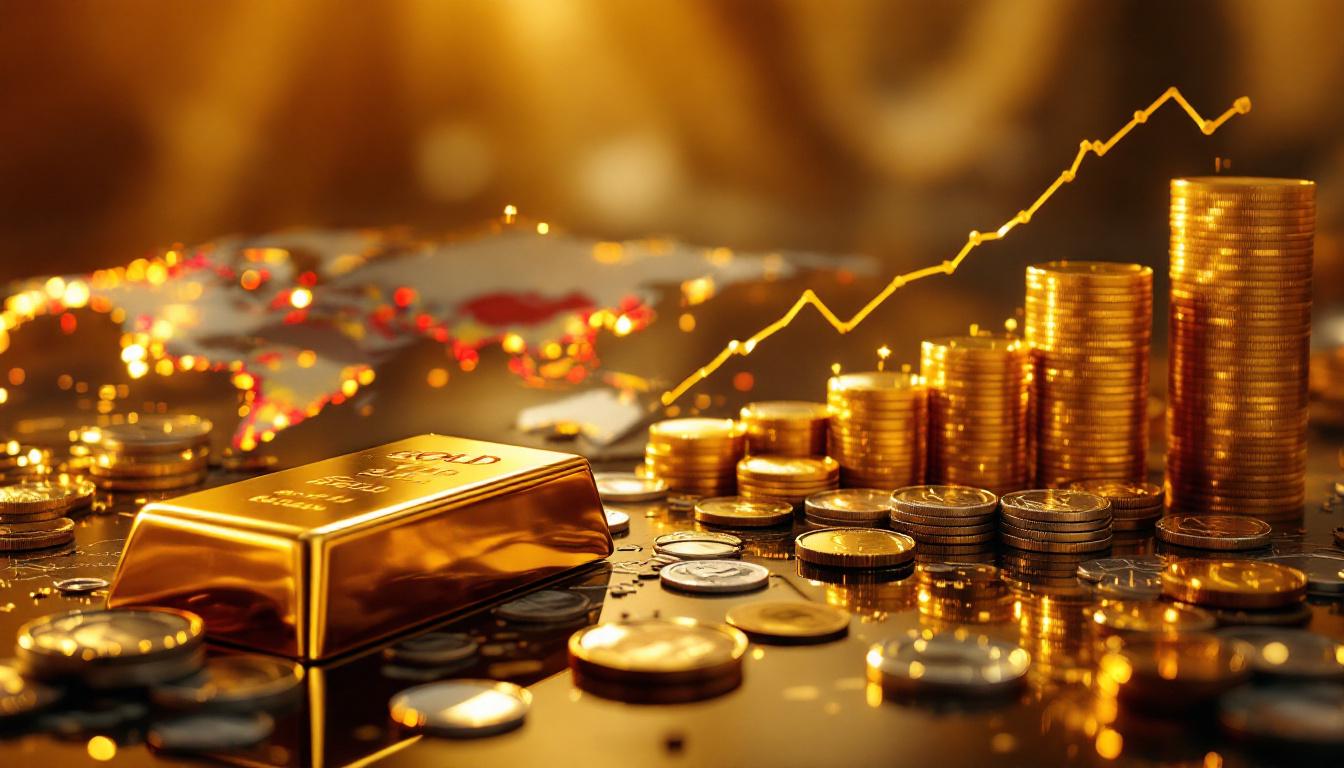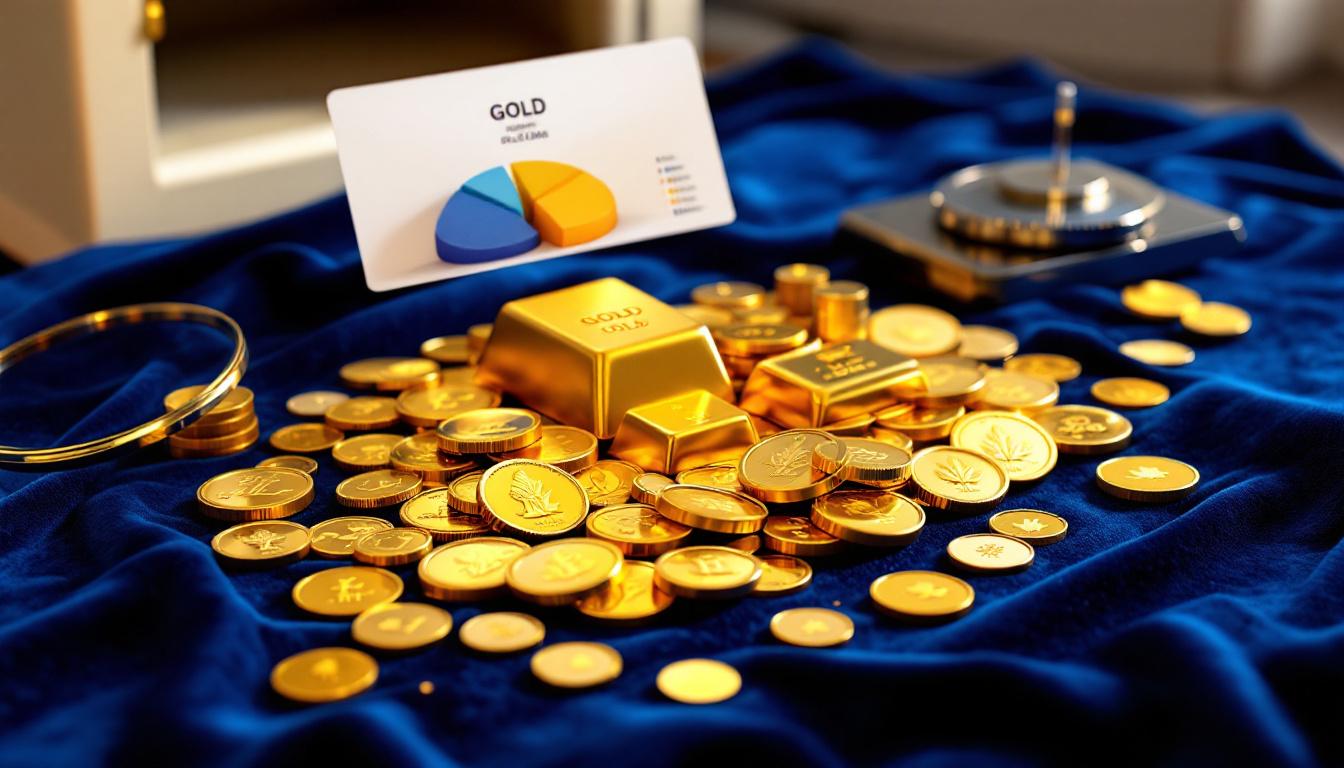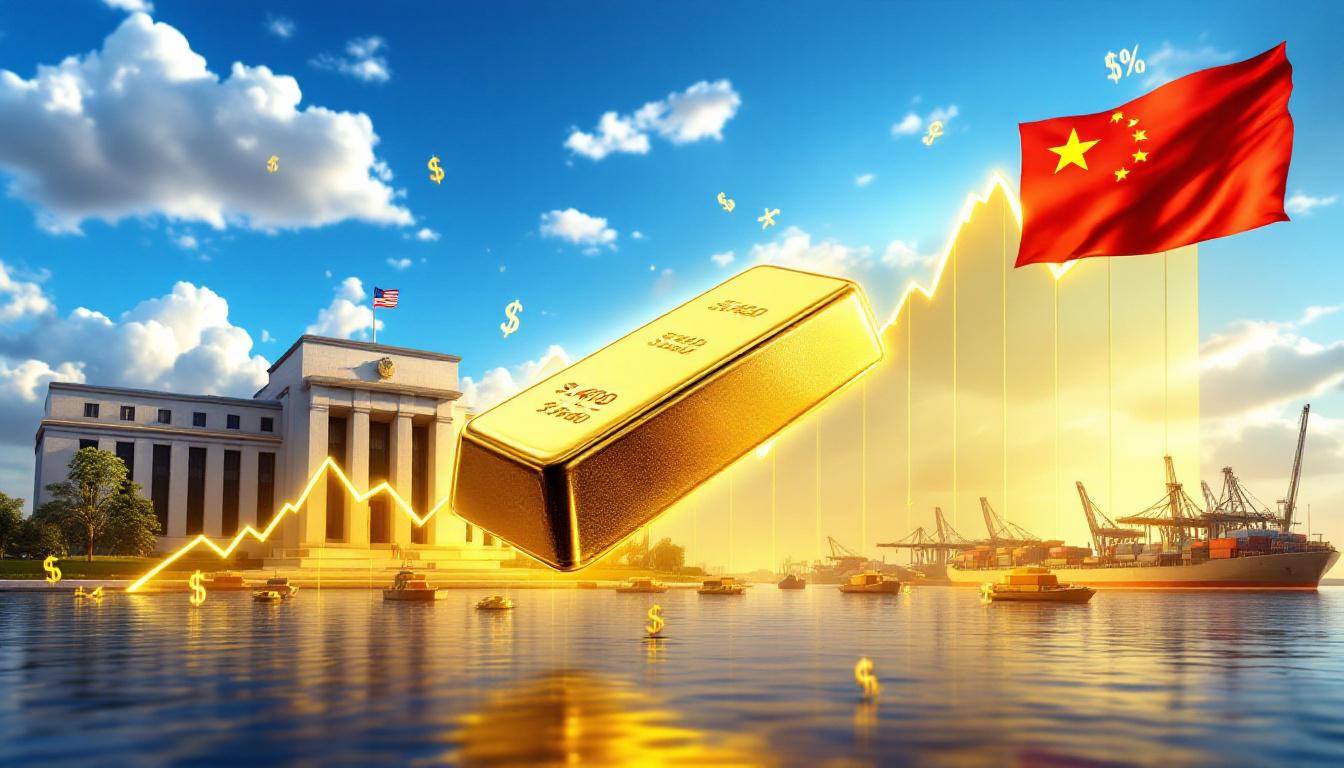Why Do Governments Stockpile Gold During Global Tensions?
The Historical Connection Between Gold and Conflict
Throughout human history, gold has maintained its position as the ultimate precious metal, serving both as a store of value and a medium of exchange in times of peace and crisis. While modern financial systems have evolved dramatically, nations worldwide continue to maintain significant gold reserves despite the substantial costs of storage and security. This enduring behavior reveals gold's fundamental connection to geopolitical uncertainty and potential conflicts.
Gold's resilience as a monetary asset stems from its unique properties – it cannot be printed, is universally recognized, and maintains value independently of any government's stability. These characteristics become particularly critical during periods of gold and global tension when traditional currency systems may face disruption.
Gold as the Ultimate War Currency
During periods of severe international conflict, gold transforms from a financial asset into what experts describe as "war currency" – the only universally accepted form of payment when traditional financial systems break down.
"When in a proper war, you need to have a hell of a lot of gold. The only currency people accept in war is gold," explains Clem Chambers, financial analyst and CEO of Online Blockchain PLC. "You can't buy it during the conflict; you need to start stacking it long before conflicts begin."
This reality explains the often-overlooked pattern of national gold accumulation that precedes major conflicts. When diplomatic relations deteriorate, gold serves as financial insurance against the possibility of economic isolation or warfare. The precious metal provides nations with emergency purchasing power for essential resources, materials, and international support regardless of currency fluctuations or sanctions.
The physical nature of gold makes it impervious to cyber attacks, financial sanctions, or electronic disruptions that might cripple digital payment systems during modern conflicts. This tangible security becomes increasingly valuable as global tensions rise.
The Peace Dividend vs. War Preparation
The relationship between gold and global tension follows a predictable historical pattern:
- Peace periods: When international relations improve (such as after the fall of the Berlin Wall in 1989), governments typically reduce gold holdings or maintain existing levels
- Rising tensions: As geopolitical relationships deteriorate, nations begin actively accumulating gold
- Pre-conflict phases: The closer a nation perceives itself to potential military engagement, the more aggressively it stockpiles gold
- War financing: Modern warfare's astronomical costs require substantial reserves prepared well in advance
After World War II, the United States controlled an unprecedented share of global gold reserves as Allied nations transferred gold to fund war efforts and Axis powers' gold was seized as reparations. Rather than hoarding this wealth indefinitely, America implemented the Marshall Plan to rebuild war-torn economies, recognizing that economic interdependence created stronger security benefits than gold accumulation.
This historical lesson demonstrates gold's dual role – while nations accumulate it before conflicts, the wise redistribution of wealth after tensions ease creates the foundation for lasting peace and prosperity.
How Are Current Global Tensions Affecting Gold Markets?
Government Buying Overtaking Market Manipulation
The precious metals market has historically been influenced by large financial institutions and trading banks employing various strategies that could suppress price discovery. However, a fundamental shift occurs when sovereign nations enter the market as serious buyers – these institutional players must adjust their positions accordingly.
"When governments start buying gold, it's like King Kong entering the room," notes Chambers. "Wall Street manipulation becomes irrelevant because governments aren't playing the same game – they're preparing for strategic contingencies."
Recent years have shown increasing evidence of governmental gold accumulation. China has consistently added to its reserves, Russia has dramatically increased its holdings, and even Turkey has pursued aggressive gold acquisition despite economic challenges. These movements coincide with deteriorating international relations, trade tensions, and regional conflicts – precisely the pattern observed historically before major confrontations.
The Scale of Government Purchasing Power
To understand the potential impact of government buying, consider the scale: annual global gold production stands at approximately 3,200 tons, representing roughly $300 billion in value at current prices. While this figure might seem substantial, it represents a relatively small sum for governments operating with trillion-dollar budgets.
A single major nation could theoretically absorb an entire year's production without extraordinary financial strain. When multiple governments simultaneously decide to increase their gold reserves, the impact on prices can be dramatic and sustained.
This dynamic creates an asymmetric market condition where:
- Traditional price suppression mechanisms become ineffective
- Physical gold begins commanding premiums over paper gold contracts
- Mining companies struggle to replace reserves fast enough
- Central banks compete with one another for available supply
Breaking the Manipulation Cycle
As governmental buying increases, the ability of financial institutions to manipulate precious metal prices diminishes significantly. This shift creates a more fundamental price discovery mechanism based on actual supply and demand dynamics rather than speculative trading strategies.
"Governments don't care about daily price fluctuations – they care about securing their national interests," explains Chambers. "They buy strategically and hold long-term, creating a price floor that steadily rises as global tensions increase."
This transition from manipulation to true price discovery represents a crucial signal for investors. When physical gold begins flowing consistently from West to East and central bank purchases accelerate, it often indicates that sophisticated governmental actors are preparing for a period of heightened international uncertainty, leading to an all-time high gold analysis.
Why Are Silver and Other Precious Metals Following Gold's Rise?
Silver: The Consumer's Precious Metal
While gold primarily serves business-to-government (B2G) functions, silver maintains a stronger business-to-consumer (B2C) relationship. Silver's lower per-unit cost makes it accessible to individual investors and consumers seeking precious metal exposure without committing to gold's higher entry price.
"You can't barter a gold coin for a chicken," Chambers points out. "Silver has historically been everyday money – the people's precious metal – while gold serves as the ultimate reserve asset."
This accessibility explains why silver typically follows gold's price movements, though often with greater volatility. When global tensions drive gold prices higher, silver eventually responds with its own appreciation, sometimes outperforming gold during sustained precious metals bull markets.
Silver's Practical Advantages During Uncertainty
Silver offers several practical advantages during periods of severe economic disruption:
- Divisibility: More suitable for smaller transactions than gold
- Historical recognition: Widely understood and accepted as money across cultures
- Practical denominations: Available in sizes appropriate for everyday exchanges
- Industrial foundation: Baseline demand from technological applications provides price support
These characteristics make silver particularly valuable during extended crises when normal financial systems remain disrupted and communities must rely on alternative mediums of exchange. Historical examples from war-torn regions consistently show silver emerging as a practical currency when conventional money loses credibility.
The Supply-Demand Imbalance in Silver
The annual global silver production stands at approximately 27,000 tons compared to gold's 3,200 tons. This roughly 8:1 mining ratio contrasts dramatically with the typical 80:1 price ratio observed in markets throughout recent decades.
This disparity creates potential for the silver-to-gold ratio to compress substantially during periods of increased precious metals demand. Historical precedents show the ratio has occasionally narrowed to 30:1 or even 15:1 during extreme circumstances.
Several factors contribute to silver's potential outperformance during periods of sustained precious metals strength:
- Smaller overall market size making price movements more dramatic
- Dual demand from both investment and industrial sectors
- Limited above-ground supplies due to industrial consumption
- Historical pattern of price compression during monetary crises
The potential for a silver market squeeze impact on global finance remains significant as investment demand increases alongside industrial consumption.
What Makes Platinum and Palladium Unique Investment Opportunities?
The Rarity Factor: Limited Annual Production
Platinum and palladium represent even more concentrated opportunities within the precious metals space. With annual production of approximately 200 tons each, these platinum and palladium dynamics create a unique market structure with extraordinary rarity compared to gold and silver.
This scarcity creates a unique market dynamic where relatively small shifts in industrial demand or investment interest can produce outsized price movements. Their limited annual production means that sustained buying pressure can rapidly overwhelm available supply.
Key production statistics that illustrate this rarity:
- Gold: 3,200 tons annually
- Silver: 27,000 tons annually
- Platinum: ~200 tons annually
- Palladium: ~200 tons annually
The Industrial Demand Evolution
Platinum historically traded at price parity with gold, and occasionally reached twice gold's value during periods of high industrial demand. Recent price weakness stemmed primarily from concerns about declining catalytic converter demand as electric vehicles threatened to replace internal combustion engines.
However, several factors are shifting this narrative:
- Extended transition timeline: Internal combustion engines remaining viable longer than anticipated
- Environmental applications: Growing energy demands requiring platinum/palladium in pollution control systems
- Hydrogen economy: Emerging fuel cell technologies requiring significant platinum inputs
- Supply constraints: Limited new mining projects coming online to replace depleting reserves
"The market has massively undervalued platinum based on electric vehicle fears," notes Chambers. "But platinum's industrial applications are expanding, not contracting – especially with hydrogen fuel cells potentially requiring substantial platinum inputs."
The hydrogen economy represents a particularly significant opportunity for platinum demand growth. Proton exchange membrane (PEM) fuel cells typically require platinum catalysts, and as nations pursue hydrogen as a clean energy solution, this application could absorb substantial portions of annual platinum production.
The Price Recovery Potential
The current price disparity between platinum and gold (platinum trading at approximately one-third of gold's price) represents a potential opportunity as industrial demand recovers. Historical price relationships suggest significant upside potential as global energy transitions create new applications for these metals.
Several market dynamics support the case for platinum group metals:
- Concentrated production in geopolitically sensitive regions (South Africa, Russia)
- Growing industrial applications beyond automotive catalysts
- Limited above-ground inventories compared to gold
- Historical precedent for trading at premiums to gold during industrial expansions
This combination of limited supply, growing applications, and current undervaluation creates an asymmetric investment opportunity where downside appears limited while upside potential remains substantial.
How Do Tariffs and Trade Tensions Impact Precious Metals?
The Connection Between Deglobalization and Gold Prices
Trade tensions and tariffs represent visible symptoms of deglobalization – the unwinding of deeply integrated international supply chains and economic relationships. This process inherently increases geopolitical uncertainty as nations prioritize self-sufficiency over economic efficiency.
"Tariffs aren't primarily economic policy – they're strategic preparation," explains Chambers. "They signal governments preparing for a world where international trade might become restricted or weaponized."
This uncertainty directly correlates with higher precious metal prices as nations prepare for potential economic isolation or conflict. The trend toward reshoring critical industries, securing supply chains, and reducing dependency on potential adversaries creates precisely the environment where gold traditionally thrives.
The Strategic Industrial Base Argument
Recent tariff policies, particularly those targeting steel, aluminum, and technology sectors, reflect efforts to rebuild domestic industrial capacity. This rebuilding serves a strategic purpose beyond economic considerations – creating the industrial infrastructure necessary to support potential conflicts.
Nations historically prepare for conflict by:
- Securing critical resource supplies (energy, minerals, food)
- Rebuilding essential manufacturing capabilities (steel, aluminum, machinery)
- Developing technological self-sufficiency (semiconductors, communications)
- Accumulating financial reserves (particularly gold)
Tariffs accelerate this process by making domestic production more economically viable, even if the short-term costs to consumers and businesses are substantial. From this perspective, tariffs represent an investment in strategic security rather than purely economic policy.
The Economic Costs of Protectionism
While tariffs may serve strategic objectives, they function as effective taxes that slow economic activity. This economic drag creates a paradoxical situation where the policies designed to strengthen national security simultaneously weaken economic performance.
This dynamic often leads to monetary policy accommodations (lower interest rates, increased liquidity) to offset the contractionary effects of trade barriers. These accommodations themselves tend to support precious metals prices by reducing the opportunity cost of holding non-yielding assets.
The combination of strategic uncertainty and monetary accommodation creates a particularly supportive environment for precious metals:
- Increasing geopolitical concerns driving safe-haven demand
- Expansionary monetary policies reducing opportunity costs
- Rebuilding industrial bases requiring precious metal inputs
- Investment demand rising as economic confidence declines
The gold rally price projections remain strongly influenced by these trade and geopolitical factors.
What Historical Lessons Can We Learn From Gold Distribution After Conflicts?
The Post-WWII Gold Concentration
The aftermath of World War II saw an unprecedented concentration of global gold reserves in the United States. This accumulation resulted from multiple factors:
- Allied nations transferring gold to fund war efforts
- Axis powers' gold being seized as reparations
- The establishment of the Bretton Woods system positioning the dollar as the global reserve currency
By 1945, the United States held approximately 70% of the world's monetary gold – an extraordinary concentration of wealth that created both opportunities and responsibilities. This concentration allowed America to reshape the post-war economic order, establishing institutions like the International Monetary Fund and World Bank.
The Marshall Plan and Economic Reconstruction
Rather than maintaining this gold concentration indefinitely, the United States implemented the Marshall Plan to rebuild war-torn economies across Europe. This strategy recognized that economic interdependence created stronger security benefits than gold hoarding, leading to a gradual redistribution of global wealth.
The Marshall Plan demonstrated a profound understanding of how prosperity reduces conflict. By transferring resources from the victorious power to rebuild former adversaries, it created the foundation for decades of peace and economic growth across the Western world.
This historical lesson suggests that while gold accumulation may precede conflicts, the wise redistribution of resources afterward creates the conditions for lasting peace. Nations that focus exclusively on hoarding wealth ultimately find themselves less secure than those that invest in creating prosperous, interdependent relationships.
The Changing Reserve Currency Dynamics
The dollar's position as the global reserve currency represents a strategic choice rather than an economic inevitability. Several factors challenge this arrangement:
- China's money supply now exceeds America's in absolute terms
- The dollar appears significantly overvalued based on purchasing power parity
- Growing resistance to dollar hegemony among emerging economies
- Development of alternative payment systems outside SWIFT
"The dollar's strength is somewhat artificial – maintained by its reserve currency status rather than economic fundamentals," notes Chambers. "As nations seek alternatives, gold provides a neutral reserve asset that doesn't depend on any single government's policies."
This transition period creates potential volatility in currency markets and increases the strategic value of gold as a neutral reserve asset. Nations seeking to reduce dollar dependency typically increase gold reserves as a preliminary step toward greater monetary independence.
How Should Investors Position for the Future of Precious Metals?
Clarity of Investment Thesis
Successful precious metals investing requires a clear understanding of fundamental drivers rather than speculative positioning. The current environment suggests several key considerations:
- Geopolitical tensions: Increasing global friction creating sustained governmental demand
- Supply constraints: Limited new production across all precious metals
- Industrial applications: Growing technological needs providing price floors
- Currency concerns: Potential realignments affecting relative valuations
"Don't buy gold because you think it's going up next week," advises Chambers. "Buy it because you understand its function during periods of international tension and currency uncertainty."
This thesis-driven approach allows investors to maintain positions through volatility, recognizing that precious metals serve as insurance against systemic risks rather than short-term trading vehicles.
Portfolio Allocation Strategies
Rather than viewing precious metals as speculative assets, investors might consider them essential portfolio components during periods of heightened global uncertainty. Different metals serve different functions:
- Gold: Primary hedge against geopolitical instability and currency debasement
- Silver: More accessible entry point with greater upside volatility and practical applications
- Platinum/Palladium: Industrial exposure with significant recovery potential from current undervaluation
A balanced approach might allocate across these metals based on individual risk tolerance and investment objectives. Conservative investors might weight toward gold for its stability, while those seeking greater upside potential might increase allocations to silver and platinum group metals.
The gold price forecast 2025 suggests continued upward momentum driven by both geopolitical and economic factors.
Physical vs. Financial Exposure
The choice between physical metal ownership and financial instruments depends on individual risk assessment and investment objectives. Physical ownership provides maximum security during severe disruptions but carries storage and liquidity challenges, while financial instruments offer convenience but introduce counterparty risk.
Options for precious metals exposure include:
- Physical bullion: Coins, bars stored personally or in secure vaults
- Allocated storage: Professional custody with specific bars assigned to the owner
- ETFs: Exchange-traded funds backed by physical metal
- Mining shares: Equity in companies producing precious metals
- Futures/options: Derivatives providing leveraged exposure
The appropriate mix depends on the specific risks investors seek to mitigate. Those primarily concerned with systemic financial collapse might prioritize physical ownership, while those seeking portfolio diversification might prefer the convenience of ETFs or mining shares.
FAQ: Common Questions About Gold and Global Tensions
Does inflation still drive gold prices?
While inflation concerns historically influenced gold prices, current market movements appear more directly connected to geopolitical tensions and governmental buying. Inflation may contribute to price action but seems secondary to strategic purchasing by nations preparing for potential conflicts.
Gold's reputation as an inflation hedge stems from the 1970s stagflation era, but its performance during subsequent inflationary periods has been inconsistent. The metal responds more reliably to real
Ready to Get Ahead of Major Mineral Discoveries?
Discover significant mineral announcements before the market with Discovery Alert's proprietary Discovery IQ model, delivering instant, actionable insights on ASX discoveries straight to your inbox. Explore our dedicated discoveries page to see how historic mineral discoveries have generated substantial returns for early investors.




